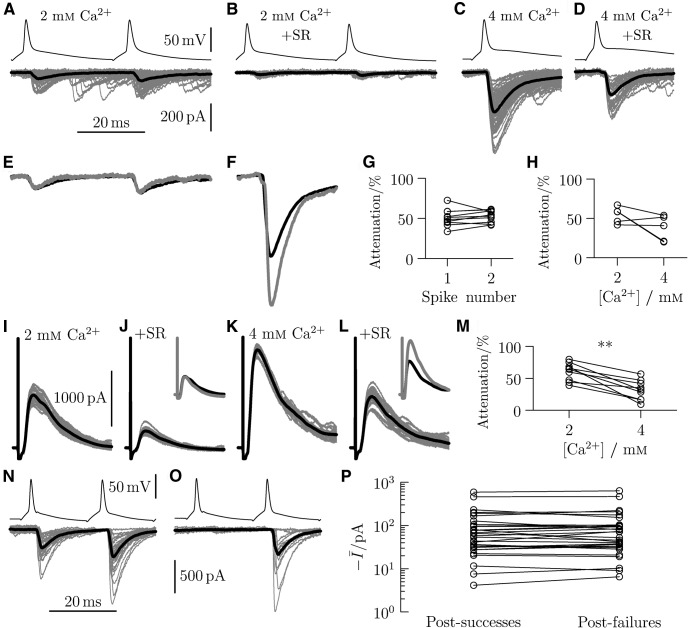Figure 3.
Increases in extracellular calcium concentration >2 mm result in multivesicular release, and paired-pulse stimulation is not associated with presynaptic depletion or postsynaptic densitization. A, Representative paired recording ([Ca] = 2 mm) with motoneuron responses (mean response in black) attenuated by SR-95531 (B). Increases in calcium concentration ([Ca] = 4 mm; C) resulted in larger responses with a reduced relative attenuation (D). This is illustrated by scaling the mean response (black) by the relative attenuation (gray) at [Ca] = 2 mm (E) for the higher concentration (F). Group data are shown for the paired-pulse stimulation at [Ca] = 2 mm (G) and changes in calcium concentration (H). Ventral root stimulation resulted in recurrent inhibitory postsynaptic currents (I) that could be attenuated by SR-95531 (J). Increases in calcium concentration ([Ca] = 4 mm; K) reduced the relative attenuation (L) as illustrated by the scaled traces in J and I. M, Group data. **p < 0.01. A representative example of a dual recording with paired stimulation is shown to illustrate the similar sizes in the response to a second spike following successes (N) and failures (O) in response to the first. P, Group data.

